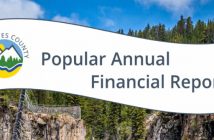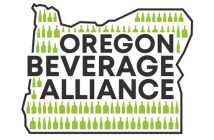(Photo by David Rosell)
The first glimpse of La Paz, Bolivia will literally take your breath away. At an elevation of almost 12,000 feet above sea level, it’s the world’s highest capital city. An estimated 800,000 Bolivians are caressed inside the bowl-like depression that resembles the caldera of an enormous volcano and is surrounded by the snow-capped Andes reaching heights greater than 18,000 feet.
A Bolivian man warned me not to take the 18-hour bus ride from LaPaz to Rurrenabaque. “Flying is much safer,” he stated.
But as a 26-year-old backpacker I was motivated by a propensity for adventure and the desire to save my precious dinero. I had no idea that the bus ride would take me on world’s most treacherous thoroughfare or that this road that connects the the heights of LaPaz to the rain-forest at sea level is known as the Death Road.
An estimated 300 people are killed on Yungas Road every year as buses plummet into the valley on a monthly basis. Luckily—or unluckily depending on your perspective—I didn’t know that at the time.
Surrounded by vertical mountain precipices and overhangs, the snaky, dirt road had been cut into the mountainside.
How can this be a one way thoroughfare? I wondered. It’s not.
Terrified does not even begin to explain the sheer panic I felt as the sheer cliff face dropped 1,800 feet into a verdant abyss to my left. No guard rails. No reflectors. No sanity. I felt as if I was riding the X2 rollercoaster at California’s Six Flags Magic Mountain without a lap bar restraint. Where’s my climbing harness, rope and ATC when I need it? I thought. What am I doing here? It was going to be a sleepless night.
With every switchback, I gazed down into the foggy valley, and held my breath. I heard my new friends─ two woman backpackers from England—begin to cry in a state of shock and disbelief. I took an enormous breath and told myself, It’s not my time yet.
Relieved not to be part of the permanent part of the Bolivian landscape the bus finally arrived to our destination after18 grueling hours. I’ll leave the mind-boggling specifics for my new book. So all these years later I have to ask myself, What was I thinking? Could I have gotten there in a way that was much safer? Of course I could have.
This is also the name of the game in the financial world where the objective is to attain our goals with the least amount of risk. It’s ok to take risks but not brainless ones like I took in Bolivia. One of the most effective ways to lessen your risks is to understand them. So let’s look at risk as it relates to finances. Here are 5 risks to recognize as the chances are likely that you will face them on your financial journey.
1. Addressing Social In-Security
Once upon a time people retired at the age of 65 and received a gold watch after spending many years working diligently for the same company. They had a reasonable expectation that they could live out their remaining 12 to 15 years comfortably, thanks to their pension, Social Security and a steady flow of dividends and interest from safe, conservative stocks and bonds. No more! What has changed? In the past Social Security was considered a sure thing. Today we are experiencing cutbacks and negative changes that I now call this program Social Insecurity. What was intended as a safety net has morphed into an entitlement program. The very foundation of the Social Security system is cracked. This crack will not disappear, but will only grow larger and more dangerous. If any company were operating on the same basis as the current Social Security program, it would have been put out of business years ago. Social Security was started originally intended to provide only a supplemental retirement income source to a minority of Americans. Today, as we are retiring earlier and living longer, it has instead become the primary retirement income source for a majority of retired Americans. The system is truly overburdened and running out. The next time you read your social security statement, take the time to read the fine print on the front page. It states:
In 2017 we will begin paying more in benefits than we collect in taxes. Without changes, by 2041 the Social Security Trust Fund will be exhausted.
2. Say Goodbye to Defined Benefit and Pension Plans
That’s just the start when it comes to financial insecurity during your retirement years. Many companies have replaced defined benefit pension plans with defined contribution plans that do not offer the same degree of assured income. Pension plans have been phased out and the shift from traditional pensions to 401(k)s has made retirement a riskier prospect because retirees must now manage their investments and control spending on their own.
Retirees were certainly startled in 2008 when they witnessed their holdings inside their retirement accounts plummet. Fortunately the markets have experienced significant growth since then and have even hit new records, but now bond yields have hit rock bottom and CDs are only offering negligible returns. With an estimated 10,000 people retiring a day, it’s no wonder that the primary concern among many retirees is simply making ends meet.
3. Addressing Inflation Risk-
The first—and some would say most threatening—risk to financial independence is inflation. During the second half of your financial journey, it is critical that you be able to maintain your purchasing power. Simply put, inflation means that every year your money buys a little—or a lot—less than it did the year before. The average inflation rate of 3.5 percent may not sound like much but even this rate of inflation means that prices will double every 20 years. How does this impact your retirement? Inflation erodes your purchasing power. Let’s take a look at inflation’s detrimental effects during a 30-plus year retirement. In 1980 the average new car cost $7,574. Today that same car costs over $30,000. In 1980 the average new home cost $62,900. Today the average cost of a new home is over $300,000.
4. Addressing Longevity Risk-
Americans are not only living longer, they’re retiring earlier. I refer to this growing gap as the Age Wave. During the last century, our life expectancy has almost doubled. Not only are people living longer, the proportion of our older population in this country is also rising dramatically. Not only do more years of retirement now need to be financed, graying now means playing! Rocking chairs aren’t for today’s grandparents. Retirement will likely involve more planes, trains and automobiles as well as skis, stand-up paddleboards and golf clubs. As life expectancy grows, will you and millions of baby boomers have enough to live on?
5. Addressing Market Risk
We don’t like to think about markets heading south, but economic recessions have occurred all throughout the history of modern economics and always will. We average one almost every nine years. We have experienced 10 recessions between 1945 and 2016. The average duration of these recessions is 10 months. As you plan your exciting years of financial independence, you need to have an investment game plan in place that will enable you to withstand future recessions, because they will come. If you were to retire at age 65 and live to age 90, statistically you would experience three recessions during your retirement years. Are you invested appropriately and prepared for the inevitable?
OK, Now that I have your attention, please know that my intention is not to immobilize you in fear but to motivate you to take action now. Prepare for your financial future so that one day you will be independent of the paycheck and work only because you choose to─not because you are forced to do so to make ends meet. By knowing, understanding and mitigating your financial risks now, you will know not to take the bus across the Death Road and fly over it safely, securely with a cocktail in hand.
David Rosell is President of Rosell Wealth Management in Bend. www.RosellWealthManagement.com. He is the author of Failure is Not an Option- Creating Certainty in the Uncertainty of Retirement. This article is an excerpt from David’s new book; Keep Climbing- A Millennial’s Guide to Financial Planning due out in stores this January.
Learn more about his book at www.DavidRosell.com or Amazon.com. Ask for David’s book at Barnes & Noble, Newport Market, Cafe Sintra, Bluebird Coffee Shop, Dudley’s Bookshop and Sunriver Resort.
Investment advisory services offered through ValMark Advisers, Inc. an SEC Registered Investment Advisor
Securities offered through ValMark Securities, Inc. Member FINRA, SIPC 130 Springside Drive, Ste 300 Akron, Ohio 44333-2431. (800) 765-5201. Rosell Wealth Management is a separate entity from ValMark Securities, Inc. and ValMark Advisers, Inc.





